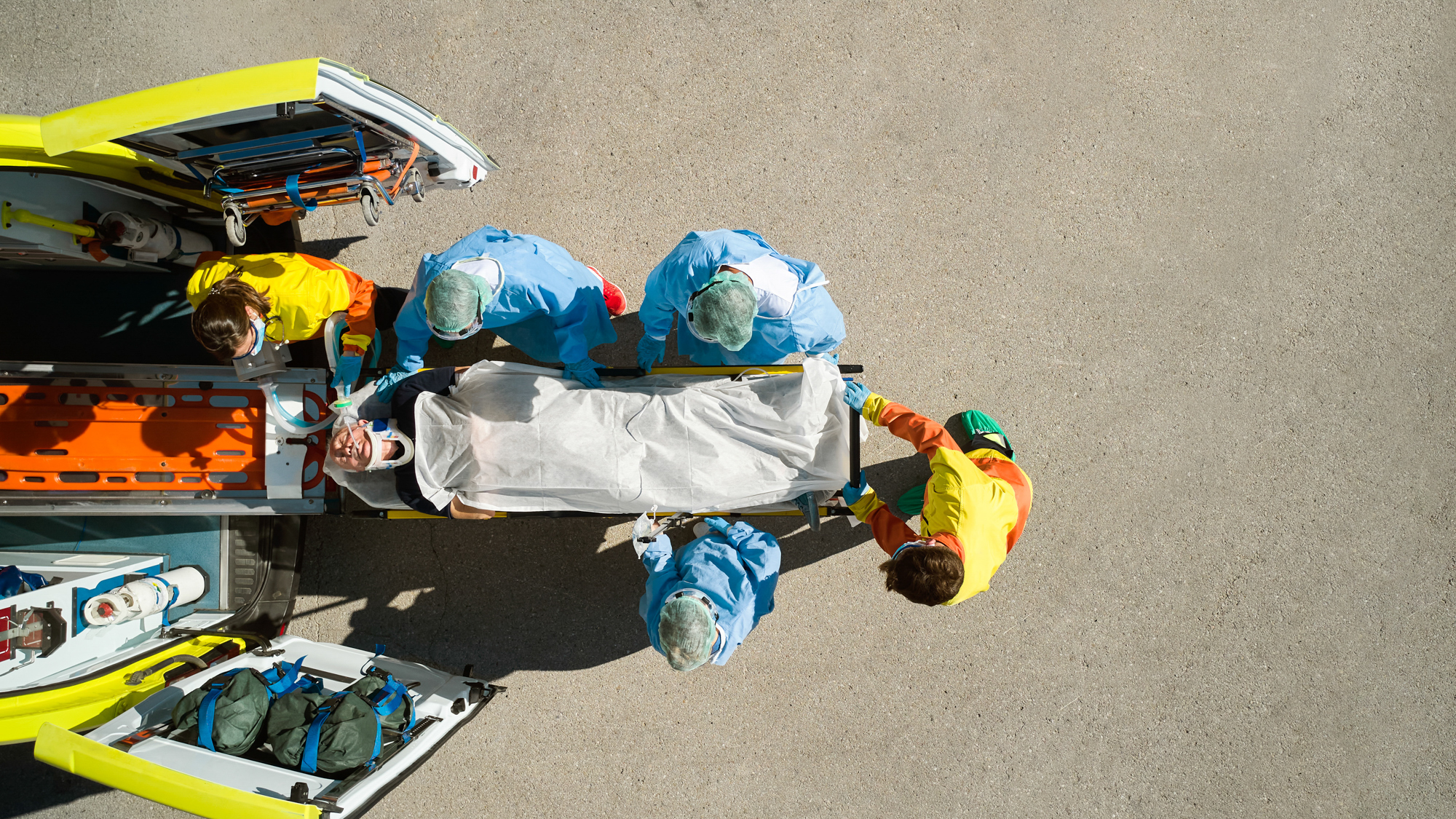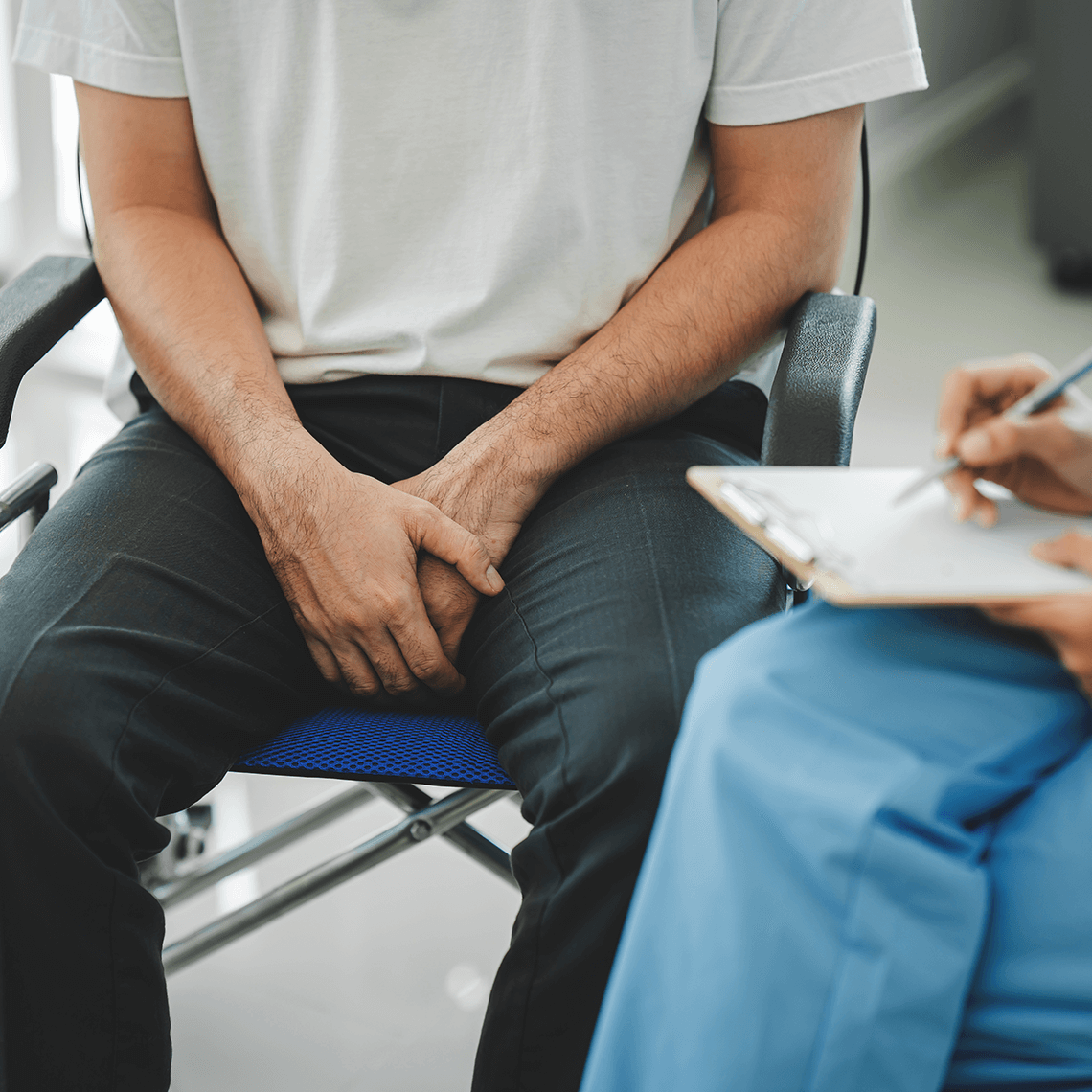Podcast
Lowering the Risk of Moving Patients to a Different Hospital
May 27, 2021

Commentators
- Stephanie Mueller, MD, MPH
- Lauge Sokol-Hessner, MD
Transcript
One of the lesser-known safety risks for hospitals is the transfer of a patient from one facility to another. Some studies suggest that, even controlling for illness severity, patients who are transferred to academic medical centers suffer worse outcomes. Medication errors, handoff failures, and equipment malfunctions are examples of potential transfer-related vulnerabilities.
Until recently, inter-hospital transfer has been under-appreciated as a patient safety risk. But that may be changing. Growth of health networks, increased governmental attention, and new research are pointing at ways to save lives and to prevent harm.
“Often patients are getting transferred because they have a complex medical problem or because they are getting sicker so it can be a risky time.”
Dr. Lauge Sokol-Hessner is a hospitalist and Medical Director for Patient Safety at Beth Israel Deaconess Medical Center in Boston. Dr. Sokol-Hessner recently published a paper in the Journal of Healthcare Quality, looking at transfer vulnerabilities and best practices to mitigate them.
“Inter-hospital transfers are a really important part of what we do as health care systems, especially at tertiary medical centers. But they are complex because the sending facility may not know what happens to their patients after their patient leaves, and from the receiving facility’s standpoint, we may not know what happened to the patient before they got to us, what tests have been done, what their trajectory or course of illness has been.”
Dr. Sokol-Hessner helped author a new guidance document to make inter-hospital transfers safer and prevent confusion and scrambles for information. He was a member of a task force convened by the Academic Medical Center Patient Safety Organization, or AMC PSO, that just published recommendations, called “A Patient Safety Framework for Inter-hospital Transfers.”
[new voice] “I actually think right now is the ideal time to start addressing improvements in the way that we manage inter-hospital transfers on a broad scale.”
Dr. Stephanie Mueller was also on the PSO task force. Dr. Mueller is a hospitalist and Associate Director of Clinical Research in the Brigham Health Hospital Unit, who has focused much of her research on the safety of inter-hospital transfers. Dr. Mueller points to potential progress with federal incentives for health information exchange. Dr. Mueller says we know more than ever about the risk, but the variability is still there, and it still causes trouble.
“One area where it actually I think has increased risk compared to other types of hospital-based care transitions is oftentimes these patients are being transitioned, not just between providers of care, but also between systems of care. There might be one hospital that has its own system. They are transferred to another hospital which has its own system.”
The PSO guidance document offers system-level advice for improvement, but it starts with a look at the individual patient. One of the first recommendations highlights the need for adequate risk/benefit assessment to determine whether a transfer is appropriate for that patient. The guideline recommends careful consideration of potential stress of the transfer on the patient, as transfer risks appear to vary by disease category, and the literature is evolving.
“It’s something that I’ve started targeting with some of my research where we did one study that looked at various outcomes, including mortality outcomes, length of stay, etc. among patients that were transferred with different diagnoses and we did find sort of differential outcomes depending on which diagnosis the patient had. There were certain diagnoses that were associated with improved mortality outcomes with inter-hospital transfer and some patient diagnoses that were associated with kind of worse patient outcomes following transfer.”
Dr. Mueller hopes to extend that research this year.
All along the transfer process, the PSO guidance document identifies risks and strategies to tackle them. For example: anticipating and standardizing communication about delays or patient status changes during the transport itself.
Dr. Sokol-Hessner: “During transport, usually transport goes fairly smoothly but when transport times are prolonged, for instance, in parts of the country where the referring and accepting institutions may be very far apart even by air, the patients can decompensate. Their clinical condition can change during transport, and we need to know about that so that they arrive to the right level of care, triaging them to a higher level of care. The folks that are actually helping transport them, whether that is by ground or by air, I think need to have their own processes to make sure that information isn’t dropped along the way and that if a patient’s clinical conditions change along the way, that that information bubbles up to the right people.”
The use of centralized transfer centers by academic medical centers is an emerging best practice. These centers can provide a standardized transfer protocol that includes communication tools, documentation, and a dedicated nurse or advanced practice clinician to coordinate triage and help direct critical information.
“As a hospitalist, which is my clinical work, I’m often on the receiving end of transfer requests and it actually takes a little bit of time to have that conversation with the referring clinician and make sure that I really have a good sense of who is the patient. What’s their trajectory? What’s happening to them? What would be the most appropriate service and level of care for them to arrive to at my hospital? And that process really requires some clinical expertise and also time to be able to do a good job.”
According to Dr. Sokol Hessner, the inclusion of multi-disciplinary and frontline perspectives in efforts to improve transfers is vital.
As research continues into which patients and which diagnoses are the best candidates for inter-hospital transfer, what is already known can help make it safer now. The AMC PSO Patient Safety Framework for Inter-hospital Transfers is available on the CRICO web site, www.rmf.harvard.edu/interhospitaltransfers.
About the Series
We’ve got you.
Our Safety Net podcast features clinical and patient safety leaders from Harvard and around the world, bringing you the knowledge you need for safer patient care.
Episodes
Case Dismissed! Every Medical Defendant’s Dream Still Holds Some Nightmares
Expert: Communication Is Top Fix for Prostate Care Allegations

How Depositions Make or Break a Medmal Defense

New Medmal Report: Documentation Matters a Lot


